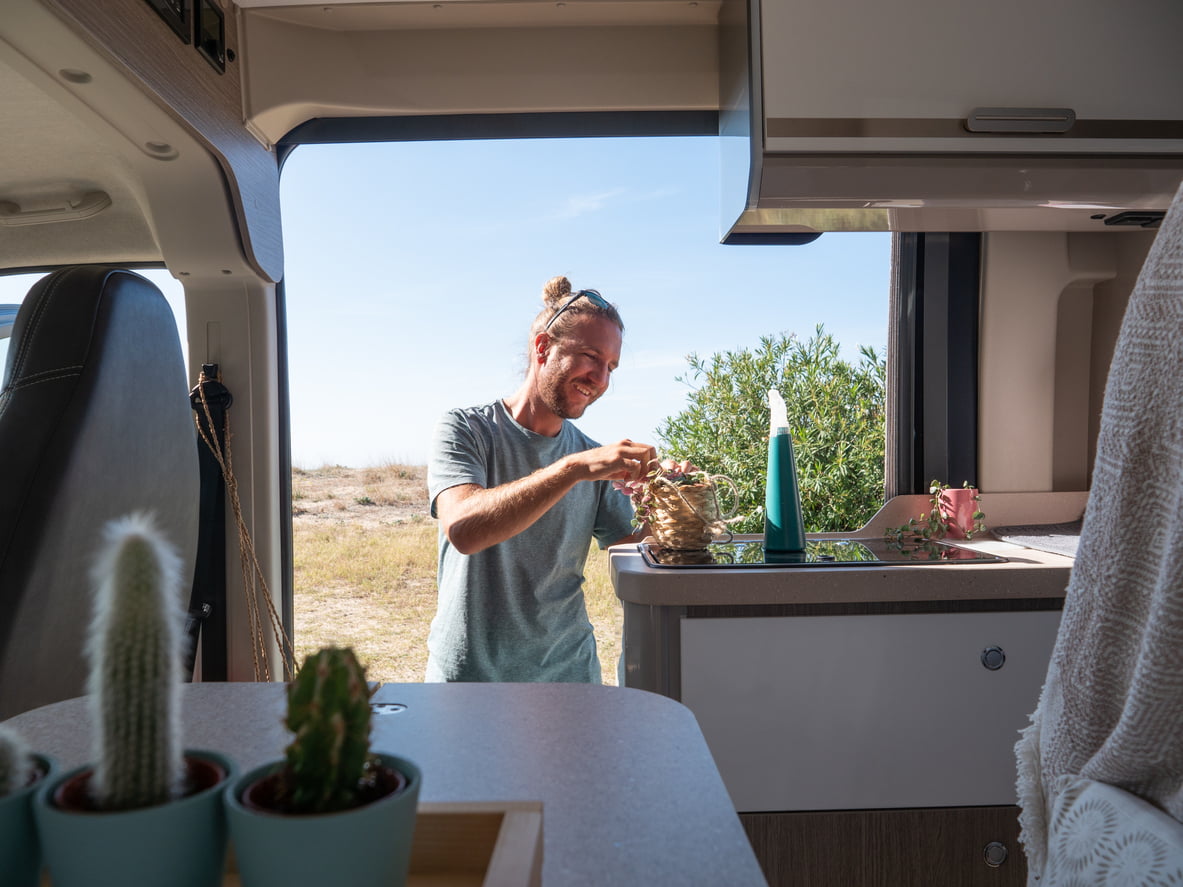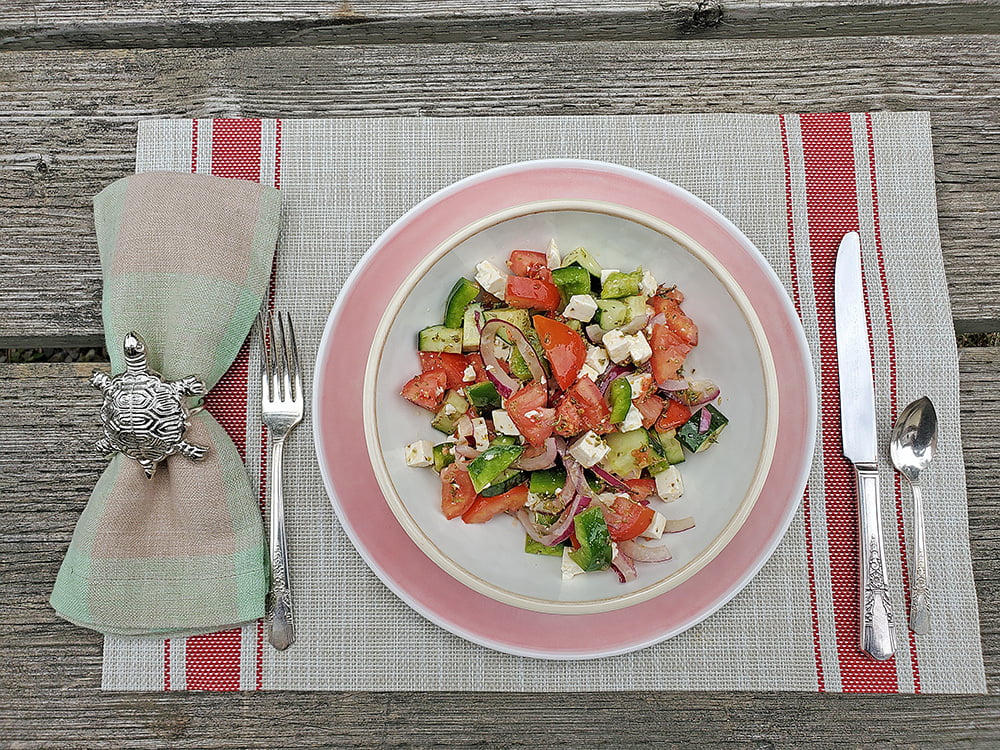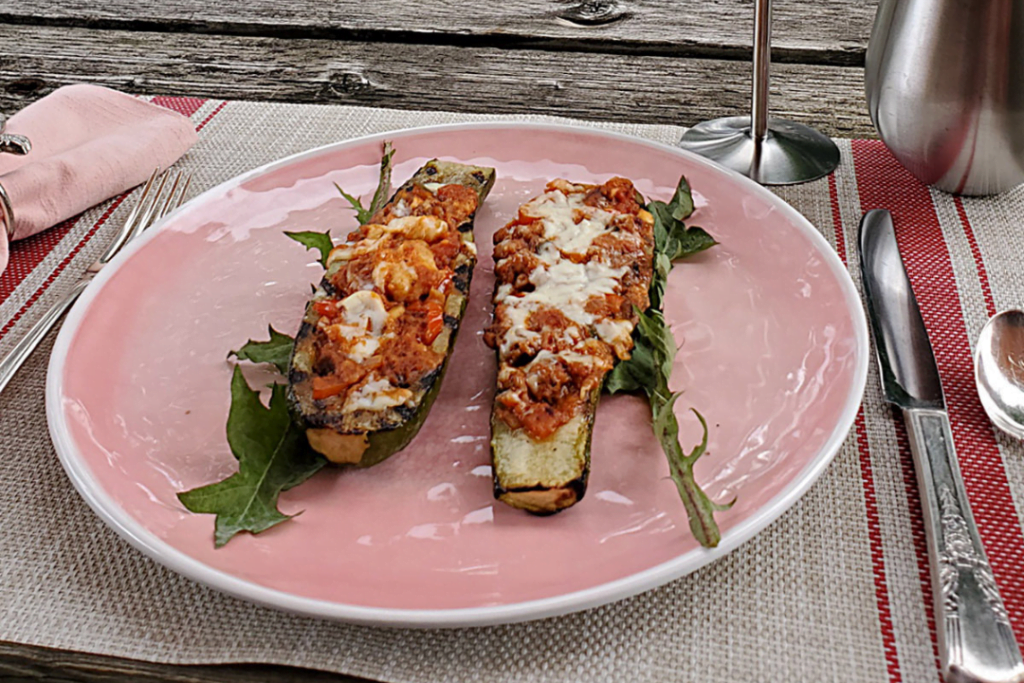With increased rates of vaccinations and potential loosening of COVID-19 public health restrictions, many of us with a hefty case of cabin fever are itching to explore the great outdoors this summer. We all know that the RVing experience comes with learning opportunities (and curves) and I’m not talking about the usual learning curves of how to maintain your rig, drive (and back in!) safely, and manage things when they’re not working the way you expected them to. Instead, I’m talking about the conundrum of wanting to travel and at the same time, after hearing so much about the environmental impact of travel, ensure that our actions don’t have a negative impact on the world we want to go out and see. It’s sometimes difficult for me to feel good heading out on a trip, knowing that our 40-foot Class A diesel rig could be harming the natural world we’re exploring! We want to make sure it’s here for millennia to come!
Although it’s not yet possible to implement an entirely zero-waste RV experience, our galley kitchen (typically the one area in our rig that produces the most waste) is the ideal starting point to reduce our impact on the scenery we love. The seven R’s for sustainable living are equally applicable to RVing as they are for sticks and bricks living: Rethink, Refuse, Reduce, Re-use, Repurpose, Recycle, and Rot. Here are some thought-starters to becoming good stewards of our environment starting from our humble galley kitchen, that’s probably quite similar to yours!
1. Rethink the birds and the bees
Without pollinators such as birds and bees, much of the food we eat and the natural habitats we enjoy would not exist.
Birds are vital to our ecosystems and they need protection. Cats kill between 100 million and 350 million birds in Canada every year. The simplest thing we can do as RVers is to not let our pet cats roam freely outside. Because they nest on or close to the ground in open landscapes, 115 Canadian bird species are the most vulnerable list due to being killed by cats – including many of my favourites and likely yours: chickadees, finches, killdeer, meadowlarks, mourning doves, nuthatches, pine grosbeak, robins, sparrows, and woodpeckers are just some of the feathered friends our felines are not so friendly to.
Native bees are our largest source of free pollination and responsible for one in every three bites of food at our supper tables. BEE-lieve it! Canada’s native bee species are dying off, threatened by hotter summers, pesticides, loss of habitat, introduction of invasive, non-native plants, air pollution, and diseases/parasites from imported bees. Our agricultural system has become dangerously dependent on imported honeybees to pollinate commercial crops. A failure in the honeybee population (which constitute less than .05% of all bee species in the world) would be disastrous to commercial food production world-wide. Hence the importance for us to understand the critical roles native bees and other pollinators play in our ecosystem and to support them.
Actions we can take to support our native bees that each and every one of us can do include:
- Planting non-invasive native plants
- Mowing our lawns and grassy areas less often
- Reverting more spaces back to their natural state (like lakefronts)
- Stopping our use of pesticides
- Exploring natural alternatives for pest management
2. Refuse to buy overpackaged food
In this context, refuse means not accepting or supporting products or companies that harm the environment. We can keep in mind that every dollar we spend or don’t spend is a vote we cast for the world we want to live in. Foodprint calculators can also help us understand the impact of our food choices on the planet and many of us have probably underestimated and miscalculated.
While it may be difficult to avoid any plastic packaging with our food, we can take control by not purchasing food that’s overpackaged (I.e. individually wrapped servings), not in season, or in non-recyclable black plastic containers. Didn’t know those weren’t recyclable? Now you know!
3. Reduce Food Waste and Understand Food Packaging Labels
The average Canadian consumer throws out 170 kilograms of food a year, equivalent to 25% of their shopping cart. Food waste in landfills produces methane gas, a gas 25 times more damaging to the environment than carbon dioxide. The World Wildlife Fund offers several suggestions on how to reduce food waste. The community of Dunedin, Florida (and home to spring training for the Toronto Blue Jays!) has a list of 55 ways to reduce waste in the kitchen, many of which we can incorporate into galley kitchens that we are ‘recycling’ and ‘reusing’ for ourselves and the planet.
Second Harvest, Canada’s largest food rescue charity and experts in perishable food recovery, pinpoints food packaging labelling as one of the leading causes of food waste. It’s important to understand that Expiration dates and Best Before dates differ. Expiration dates apply to a very limited number of items that must not be consumed after the date indicated: Formulated liquid diets, meal replacements, baby formula, nutritional supplements, certain pharmaceuticals, and pre-packaged fresh yeast. In contrast, the Best Before date refers to the anticipated amount of time the manufacturer identifies that an unopened food product will retain its freshness, taste, and nutritional value (when stored under appropriate conditions). A Best Before date is, therefore not an indication of product safety. This means that if we’ve stored these items correctly, we can safely use them after the date on the packaging.
4. Re-use what we already have onboard
One way we’ve found to reduce the number of items in our galley kitchen is to ensure that each appliance can multitask. We’ve found that an Instant Pot-type of the cooker, a NutriBullet Rx, a portable induction cooktop, a combination convection microwave oven, and a soup maker do the trick.
5. Repurpose
Before disposing of an item, consider how it could be repurposed, repaired, or donated. Be Kind magazine offers suggestions for sustainability and a list of websites for repurposing and upcycling items. Who says we can’t have a bit of elegance in our galley kitchens? Silver trays, jugs, and teapots purchased from thrift stores are practical and sturdy items. Websites such as Big Oven, Super Cook, and My Fridge Food are rich sources of recipes for using up leftovers and ingredients we already have in our galley kitchens.
Last summer, we had great success in growing new green onions (scallions) from the root ends that we would otherwise have trimmed off and tossed in the compost. Who doesn’t love FREE FOOD?
Here’s how you grow scallions from just the unedible root ends you would normally throw out:
- Slice off the ends of the bulbs, leaving roots attached.
- Stand the bulbs root-end down in a small jar with water and set it on the windowsill. Change the water as needed.
- In a week to 10 days, green shoots will begin to emerge from the tops of the bulbs.
- When the roots are robust enough, regularly plant them in soil and water.
- Expect to get three to four harvests from your scallion bulbs before you need to plant new ones.

6. Recycle Correctly
Not all municipal and local recycling programs accept the same items. We must familiarize ourselves with what’s accepted at different recycling depots on our travels and not assume that what we can recycle at home is what we can recycle elsewhere. Emptying and rinsing food containers before recycling them helps to ensure that residue from items like jars and yogurt tubs doesn’t get soaked up by paper and ruin large batches of otherwise perfectly good recyclables. Contaminated recycling costs millions annually in damaged equipment, workplace injuries at the recycling facility, and reduced value of the recyclables. The City of Toronto, for example, states that 30% of what’s placed in their blue bins can’t be accepted in their system.
7. Rot in the Composter
Simply put, whatever is left of food items that cannot be reused or repurposed, can be composted to turn food waste back into nutrient-rich soil. As with recycling, it’s important for us to familiarize ourselves with green bin services that may be provided at our travel destinations.
Stay positive, test negative, and be kind!




